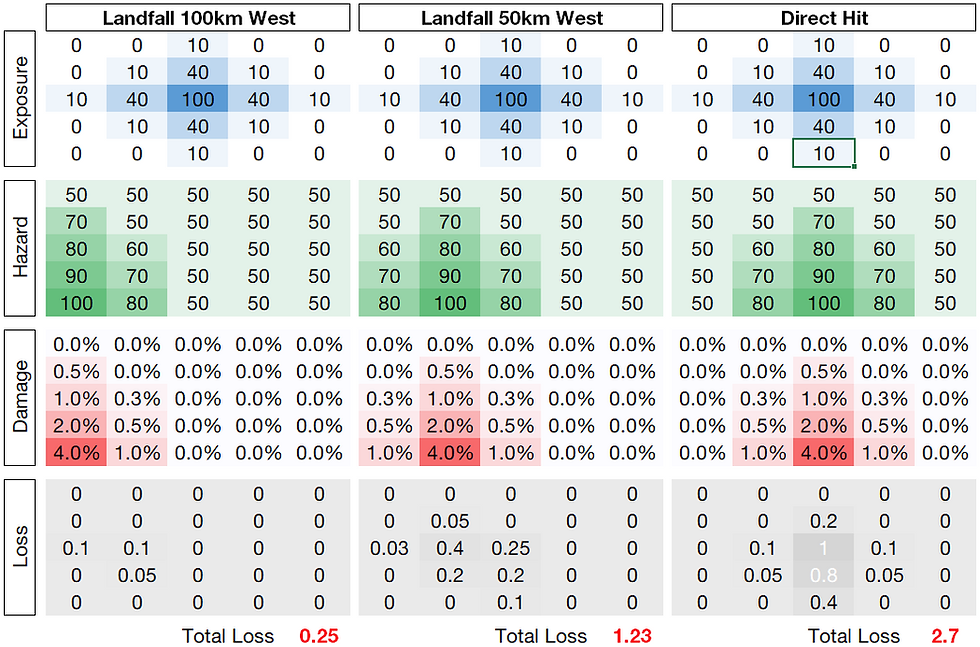How can we tell if things are getting worse?
- Richard Dixon

- May 19, 2018
- 3 min read
I finally got round to reading Roger Pielke Jnr's book The Rightful Place of Science: Disasters and Climate Change. It's an illuminating read on climate change and its relationship to the perceived increase of extreme events - and also, disappointingly, how Pielke has been treated by fellow scientists for thinking differently from the crowd. I think there is a tendency to align climate change with “every hazard is getting worse” and Pielke’s book certainly in places is a strong counter-argument to this.
Prompted partly by the work of Pielke - and a slightly frosty exchange on Twitter between two of our modelling firms about evidence around near-term views of hurricane risk - I wanted to take a look at how easy it is to tell whether there is an increasing trend in a particular hazard, driven by climate change or otherwise. (It also actually ties in with some work I'll be presenting on European Windstorms at the OASIS conference around whether we are seeing any windstorm changes in recent decades by using multiple simulations of historical conditions).
So I’ve done a very, very simple exercise. Imagine an extreme event of your choosing, be it flood, hurricane, windstorm or plague of locusts, whose risk of occurrence is becoming more frequent – yes, potentially through climate change - such that it increases in yearly probability from 5% (20 year RP) in 1940 to 10% (10 year RP) in 2020. As you might imagine, this would amount to a fairly noticeable doubling of the frequency of this event over this period

The thing I'm wondering is: "what are the chances that a change in this low-frequency event becomes evident from the historical record over time?”. For the purposes of this study, I’ve decided to compare the first half of the period (1940-1980) to the second half (1980-2020) to look for evidence that our event becomes more frequent between these two periods.
So, I've effectively simulated 1000 "histories" of 1940-2020 and tallied the occurrence of the event from 1940-1980 and 1980-2020 in these 1000 histories, to see how "detectable" this event is across all the simulations.
To keep it simple – for each “history” from 1940-2020, I split the results into three categories:
More events are evident from 1980-2020 (Increase)
Fewer events are evident from 1940-1980 (Decrease)
No change in the number of events between the two groups (No change)
My gut feel was that this change would be detectable pretty much most of the time, given the size of the change in the frequency from a 20 year RP to a 10 year RP:

So yes: in the majority of 1000 simulations of 1940-2020 (591 of 1000, so around 60%), the increase in underlying risk results in an increase in the event occurrence in the latter (1980-2020) period.
However, what surprised me the most in this example is that in 255+154 = 409 of the 1000 80-year simulations (around 40%), no change or even a decrease in the frequency of events was detected: despite a doubling in the underlying risk.
Even though the underlying risk was increasing notably over time, you effectively only have a 60% chance of noticing it in the data: in this simple example at least. Essentially: if you’re lucky, the “history” that you see in the face of an increasing underlying hazard will represent the changes in the underlying risk.
It’s admittedly a very crude example and I could look into generalising this by way of the length of history, for example, but this certainly helps me to think a little more clearly – or maybe a little more inquisitively - on how we use historical data before shouting a “yes” or “no” to thing such as climate change influences.
But it also highlights how short historical records may not show up underlying trends in the data.
What’s the next step? Well I think academia are already starting to tackle it. Re-simulating our atmosphere’s recent history tens or hundreds of times in climate models may help provide us with additional “histories” that could provide answers to the role of climate change in our key tail risks. Of course, let’s not fool ourselves that this is the golden bullet: climate modelling isn’t without its problems. Many climate models have biases and cannot properly resolve the more intense events.
However, this is certainly a step in the right direction to better getting to grips with the thorny issue of understanding whether climate change may already be affect the underlying risk in our models.
This post originally appeared on the Simplitum/Nasdaq ModEx blog.




Comments